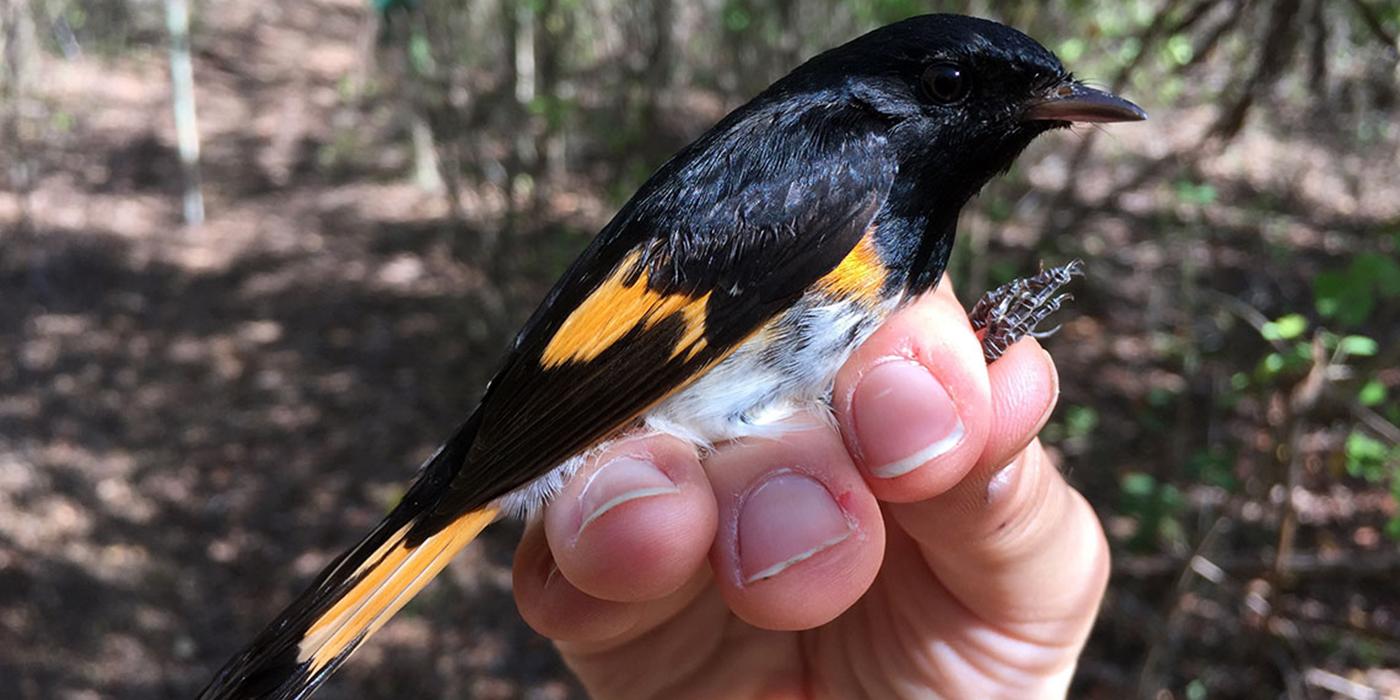Winter Ecology in Jamaica
This project is no longer active. Please contact us with any inquiries.
Smithsonian Migratory Bird Center scientists use both traditional and new methods to learn more about how North America's migratory birds fare during their nonbreeding season.
Every winter, SMBC researchers head to Jamaica's coastal black mangrove forests and adjacent scrub to study the birds that spend their non-breeding season there. Over the past 25 years, these scientists have gained key insights into how winter ecology — interactions with habitat, food, weather, climate and other animals — impacts the birds, not just at that time, but also during the following breeding season and subsequent years.
For example, researchers have found that winter habitat significantly impacts the reproductive success of American redstarts. One study showed that redstarts occupying lower-quality scrub habitat lost up to 8 percent of their body weight — a significant amount for a small bird — and left, on average, six days later for breeding grounds. This put them at a serious breeding disadvantage compared to their fitter counterparts who occupied more productive mangroves during the winter.
But it is not just about good versus bad habitat. SMBC has also found that winter climate really matters. Wetter winters produce more insects, which sustain redstarts and other migratory birds. Rainfall and subsequent food availability influence birds' body conditions, when they depart for breeding areas and the number of young they produce in the U.S. and Canada.
In addition to reproductive success, winter habitat quality can also impact survival in a later season, abundance, breeding season range limits and natal dispersal. Research continues to explore how winter climate influences space use and migration strategies.
These studies help provide a full picture of what influences bird species' long-term survival and highlight the need to protect high-quality winter habitat.













